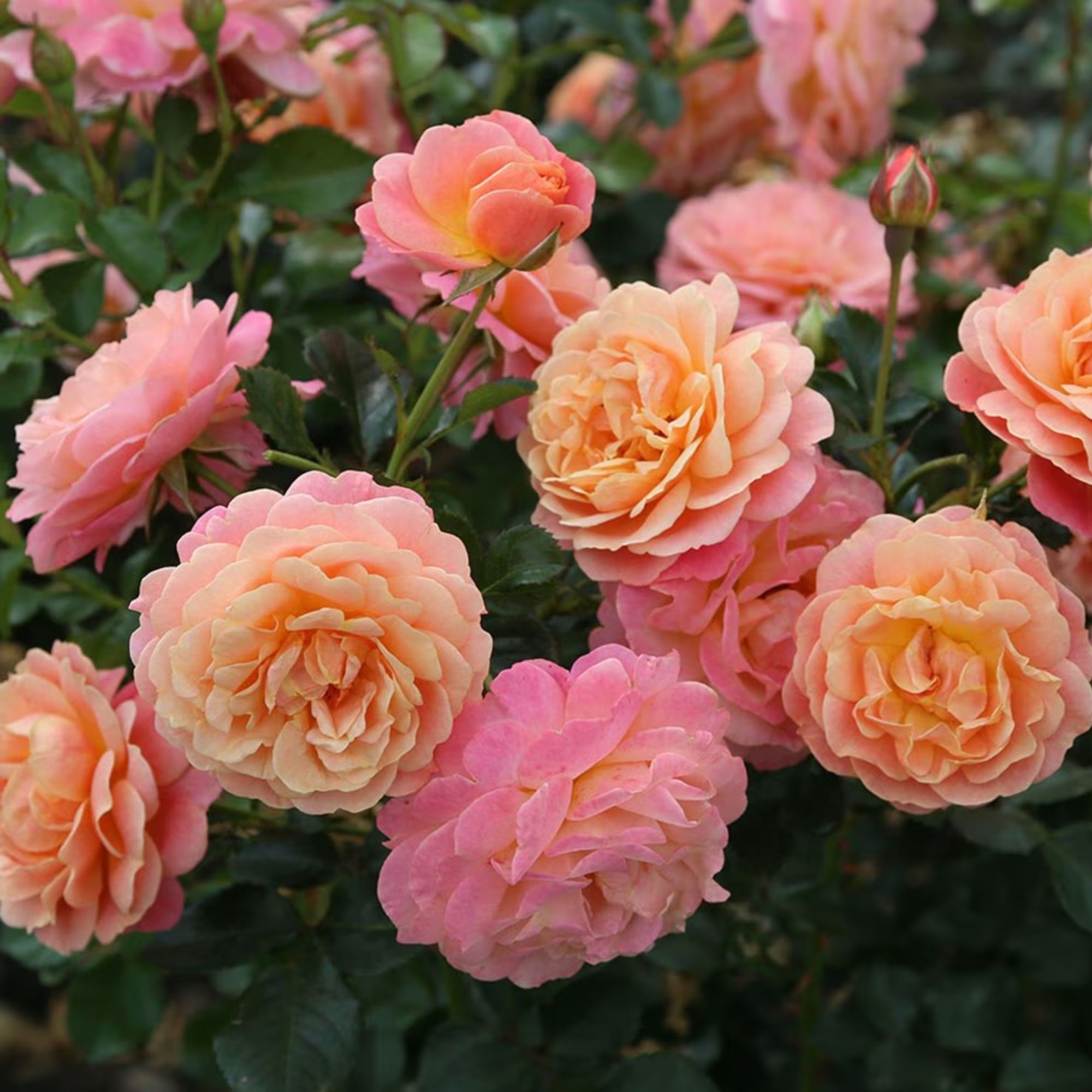
If you've been anywhere near social media of late, you've likely had a photo of an osiria rose pop up at least once. At least. It's just as likely, of course, that you'll have dismissed the flower, with its surreal colouring, as just another piece of AI art.
Here's the thing, though; the osiria rose is real. And, if you're keen to learn how to grow perfect roses, it's likely one of the varieties you have on your to-do list.
'The osiria rose is a hybrid tea rose, which is upright and busy and does have bicoloured fragrant flowers, although not to the point of some of the over-edited images online,' says Morris Hankinson, director of Hopes Grove Nurseries.
The osiria rose
Known for its strikingly beautiful two-tone petals, it's little wonder that the osiria rose is enjoying a sudden surge of popularity – it is, let's face it, made for the age of social media.
'The rose features deep red or pink petals on the upper side and a silvery-white underside, creating a stunning contrast,' says Christopher O'Donoghue of Gardens Revived.

'This rose is highly valued for its unique appearance and strong fragrance, making it popular among gardeners and rose enthusiasts,' he adds.
That being said, both Morris and Christopher agree that the osiria rose 'is not a rose that will grow to look like the many online AI images' – and that gardeners may enjoy the same impact with any bicolour rose.
Keen to grow one of your own? Here's what you should know...
What you will need
It's difficult to find osiria roses in stock at the moment, largely because of their recent surge in popularity (we have our eye on this pair of osiria rose trees from Gardening Express, mind you).
If you can't wait and want a similarly gorgeous two-tone effect, though, the Rosa Peach Melba from Crocus is an award-winning new variety of rosa... and, yes, it boasts bicoloured blooms of apricot and pink.
You should also have to hand...
- composted organic matter, such as Levington Peat Free John Innes No.3 from Amazon
- general purpose fertiliser, like Vitax Q4 All Purpose Plant Food from Amazon
- a tough pair of gardening gloves (try the Ladies’ Rose Gauntlets from David Austin Roses)
- a good pair of secateurs, like the Felco FEL2 Model 2 Original Secateurs from Amazon
Step-by-step guide
Honestly, if there's a way to grow rose cuttings in potatoes, there's a way for you to grow an osiria rose (or a similarly striking bicoloured bloom) in your own garden.
Still, Christopher notes that this visually impressive specimen can be somewhat difficult to maintain, as it requires 'careful attention to soil, sunlight, and pruning for the best results'.
With that in mind, then...
1. Find the perfect location
Whether it's an osiria rose or not, roses generally require at least six hours of sunlight per day.
'Choose a spot in your garden that gets plenty of sunlight, especially in the morning,' says Christopher, 'and try to plant it in a location sheltered from strong winds, as roses can be sensitive to harsh weather.'
2. Prep the soil
'All roses prefer slightly acidic soil (pH 6.0 to 6.5) that is rich in organic matter,' says Christopher, 'so be sure to check the pH levels on yours. If needed, you can amend the soil with compost or well-rotted manure before planting.'

Roses also hate to be overwatered, so make sure the soil is well-draining, too.
3. Get planting
Whether it's an osiria rose or a peach melba, the team at Crocus advise that you should 'dig a deep hole roughly twice as wide as the plant’s roots and mix in a generous amount of composted organic matter'.
'Plant your rose with enough space around it to allow good air circulation, reducing the risk of fungal diseases,' adds Christopher.
4. Show it some TLC
To keep your osiria rose looking its very best, Christopher insists that you show it plenty of care and affection.
'You'll want to water your rose regularly, especially during dry spells, taking care to water at the base and avoid the leaves to prevent diseases,' he explains.
'Add mulch around the base to retain moisture and keep the roots cool in summer, and take care to use a balanced rose fertiliser in the spring as the new growth starts. You'll should also feed it a second time in the midsummer if you want continuous blooming.'
5. Prune and deadhead
It's important to, just as you would with roses more generally, prune your osiria rose in February, just before new growth begins.
'Cut back to about 1/3 of its height, removing dead, damaged, or crossing stems,' says Christopher, who notes that deadheading spent flowers on a regular basis will encourage more blooms throughout the season.
6. And don't forget to overwinter
Overwintering is particularly important for this plant, particularly during harsh winters.
'Cover the base of the osiria rose with mulch or horticultural fleece to protect the roots from frost damage,' advises Christopher.
FAQs
Is the osiria rose real?
'The osiria rose is indeed a real rose, however it is not a rose that will grow to look like the many AI images circulating online!' says Morris Hankinson of Hopes Grove Nurseries.
Also known as the red blend hybrid tea rose, the osiria rose variety is remarkably tricky to get hold of in the UK at the moment thanks to its surge in popularity on social media.
Thankfully, you can get hold of other bicoloured blooms (such as the peach melba rosa) for a similarly striking effect.
How do you grow osiria roses?
If you'd like to try and grow osiria roses for yourself, Morris Hankinson of Hopes Grove Nurseries says they 'will need fertile, well drained soil with moisture and to be planted in full sun'.
'Mulch in early spring and feed with a rose feed during the summer. When it comes to planting, remember bare root roses are ideal to get started with and available from October through to March,' he adds.
With all of the above in mind, will you be growing an osiria rose for yourself? And, if so, will you be proudly snapping its blooms for your own Instagram feed?
We thought so. We guess we'll eagerly await a slew of bicoloured blooms come next summer, then...







